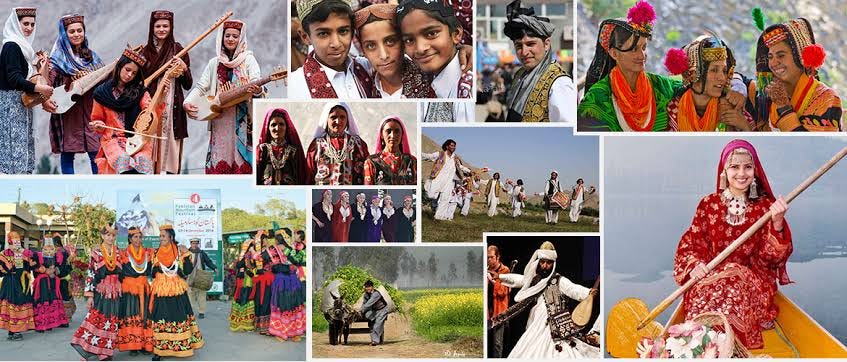By: Rachel Sammar
World Children’s Day is a significant occasion to promote children’s rights, education, and well-being worldwide. In Pakistan, a nation abundant in cultural, linguistic, and religious diversity, it offers an opportunity to instill the values of inclusivity and respect for differences among young minds. By teaching children to appreciate diversity, we pave the way for a more accepting and united future.
Here are ten practical and engaging ways to help children in Pakistan embrace diversity on World Children’s Day:
Celebrate Cultural Heritage Through Stories
Introduce children to Pakistan’s cultural richness through storytelling:
Folk Tales: Share regional tales such as Heer Ranjha from Punjab or Umar Marvi from Sindh to highlight diverse traditions.
Books with Diverse Characters: Choose stories by Pakistani authors showcasing various ethnic and cultural backgrounds.
Interactive Sessions: Use puppetry or dramatization to bring stories to life, fostering curiosity about different customs.
Organize Multicultural Events
Host events that showcase the country’s diversity:
Food Fairs: Offer traditional foods from all provinces, like Balochi sajji or Sindhi biryani.
Cultural Dress Days: Encourage children to wear regional attire and learn about its significance.
Music and Dance: Include performances of Bhangra, Attan, and Jhoomar, and let children participate.
Promote Language Learning
Celebrate Pakistan’s linguistic diversity:
Workshops: Teach basic phrases in Sindhi, Pashto, or Balochi.
Bilingual Books: Use Urdu and regional language storybooks to highlight linguistic heritage.
Music: Introduce children to songs in regional languages, connecting them to cultural roots.
Foster Friendships Across Boundaries
Encourage interactions across cultural and regional lines:
Pen-Pal Programs: Pair children from different parts of Pakistan to exchange letters and stories.
Field Trips: Organize visits to diverse communities to foster understanding.
Group Projects: Promote teamwork through collaborative art or science activities.
Teach Religious Harmony
Highlight Pakistan’s religious diversity:
Introduce Festivals: Share traditions of Eid, Christmas, Diwali, and Vaisakhi to encourage respect for all faiths.
Visits to Worship Places: If possible, arrange visits to mosques, temples, churches, and gurdwaras to teach tolerance.
Inspiring Role Models: Share stories of figures like Abdul Sattar Edhi, who transcended religious divides.
Use Media to Highlight Diversity
Leverage child-friendly media to teach inclusivity:
Cartoons and Videos: Watch shows like Burka Avenger or short documentaries on Pakistan’s diverse communities.
Creative Content: Encourage children to create art or videos celebrating their cultural heritage.
Incorporate Interactive Activities
Make learning about diversity fun:
Role-Playing Games: Help children step into the shoes of someone from a different background.
Art Projects: Create regional crafts like Sindhi ajrak or clay models inspired by cultural symbols.
Diversity Bingo: Play a game where kids identify cultural or linguistic elements they’ve learned about.
Enhance Curriculum to Include Diversity
Advocate for inclusive education:
Diverse Textbooks: Ensure children learn about contributions from all ethnic and minority groups in Pakistan.
Global Perspectives: Teach about international diversity alongside local traditions.
Teacher Training: Equip educators with tools to discuss sensitive topics thoughtfully.
Celebrate Everyday Diversity
Normalize diversity in daily interactions:
Mixed Playgroups: Create spaces where children interact with peers from varied backgrounds.
Everyday Role Models: Highlight Pakistani figures who broke barriers, like Malala Yousafzai or Arfa Karim.
Kindness as a Value: Teach children to appreciate small, inclusive acts like sharing lunch with a diverse group of classmates.
Involve Parents and Communities
Engage families in promoting diversity:
Parent Workshops: Educate parents on fostering inclusivity at home.
Community Celebrations: Organize cultural exchange events featuring diverse traditions.
Volunteering: Involve families in community service to build empathy and understanding.
World Children’s Day is a unique chance to celebrate diversity and instill values of inclusion and harmony in Pakistan’s future generations. By embracing the country’s rich cultural heritage and using creative approaches, we can equip children with the tools to build a more united and compassionate society. Teaching children to value diversity isn’t just an act of education—it’s an investment in a stronger, more harmonious future.


